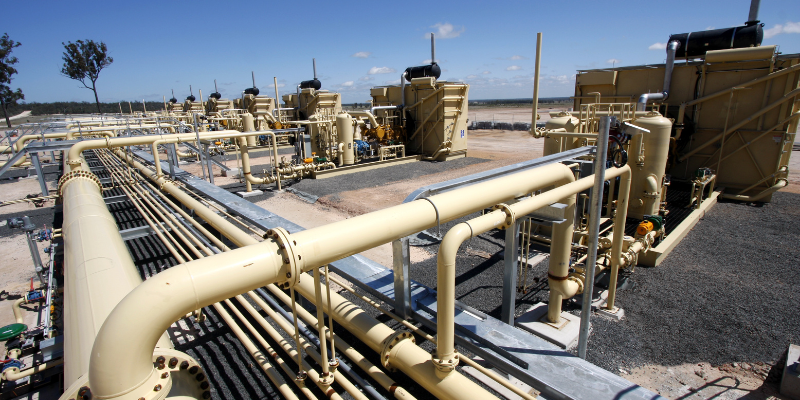How Vent Gas Capture Systems Reduce Methane Emissions in Natural Gas Operations

The oil and gas industry continues to feel increasing pressure to reduce greenhouse gas (GHG) emissions, with methane mitigation emerging as a top priority. Methane, a potent GHG with a global warming potential (GWP) approximately 25 times greater than carbon dioxide, is frequently released during production, compression, and storage activities.
Vent Gas Capture Systems (VGCS) have become a reliable, field-proven solution to address routine venting and recover valuable hydrocarbons. This article provides a detailed, engineering-focused overview of vent gas capture technology, its applications, system advantages, and considerations for implementation.
What are Vent Gas Emissions within Natural Gas Operations?
Vented gas refers to the intentional release of hydrocarbons, primarily methane, from equipment such as:
- Compressor packing vents
- Tank battery vents
- Instrumentation enclosures
- Compressor crankcases
- Pipeline blowdowns
While some venting is necessary, uncontrolled or routine venting presents significant environmental, economic, and regulatory challenges.
Methane's Environmental Impact
Methane is classified as a Short-Lived Climate Pollutant (SLCP) with a high GWP over a 100-year period. According to industry research and regulatory bodies, vented methane emissions contribute disproportionately to the oil and gas sector's GHG footprint.
Regulatory Frameworks
In Canada and globally, methane emission reduction targets have been formalized through initiatives such as:
- Provincial and federal carbon pricing mechanisms
- International methane reduction commitments (e.g., Global Methane Pledge)
Operators failing to reduce vented emissions face potential fines, production restrictions, and/or reputational damage.
What Is a Vent Gas Capture System (VGCS)?
A Vent Gas Capture System is engineered to recover hydrocarbon emissions that would otherwise be vented into the atmosphere. The recovered gas is redirected for productive use or reintegrated into the system, eliminating or significantly reducing atmospheric release.
Core Operating Principle
Modern VGCS designs utilize a gas-to-gas ejector system, incorporating the following elements:
- Motive Gas Source: High-pressure natural gas supplied from an existing system line or compressor discharge.
- Ejector Assembly: A subsonic, double-choke ejector generates a low-pressure zone, creating suction.
- Suction Port: Captures zero-pressure vent gas from designated sources.
- Mixed Gas Discharge: The combined motive and vent gas is discharged at medium pressure for controlled, non-emitting use.
Benefits of Vent Gas Capture Technology
H3: 1. Regulatory Compliance
VGCS assists operators in meeting emission limits under AER Directive 060 and other provincial or federal standards. This reduces exposure to regulatory penalties and improves environmental reporting accuracy.
2. Methane Emission Reduction
By capturing and utilizing vent gas, VGCS directly contributes to methane intensity reduction targets, supporting broader ESG objectives.
3. Operational Efficiency
Recovered gas can be:
- Reintroduced into compressor suction
- Redirected to fuel supply lines for engines
- Utilized in other non-emitting applications
This reduces product loss and may lower fuel costs.
4. System Integrity Preservation
Unlike some retrofit solutions that introduce backpressure into vent systems, properly engineered VGCS maintains zero or near-zero backpressure. This avoids:
- Increased leak potential at seals and enclosures
- Unintended migration of emissions to alternative points
- Overpressurization of sensitive equipment
Engineering Considerations for VGCS Implementation
Motive Gas Source and Pressure Stability
VGCS performance depends on the availability of stable, high-pressure motive gas. Variations in motive pressure or discharge pressure impact suction efficiency and gas recovery rates. System design must account for site-specific pressure dynamics.
Vent Gas Volume Fluctuations
Production sites experience varying vent gas volumes depending on operational conditions. VGCS must be sized and configured to accommodate these fluctuations while maintaining reliable recovery performance.
Zero Governor and Backpressure Control
Incorporating a zero governor or vacuum control regulator at vent gas inlets allows precise backpressure management, ensuring vent gas recovery without inducing overpressure conditions.
Integration with Existing Infrastructure
Effective VGCS design minimizes the need for extensive modifications to:
- Piping systems
- Instrumentation configurations
This reduces installation time and capital expenditure.
Applications of Vent Gas Capture Systems
VGCS technology is suited for a broad range of upstream and midstream operations, including:
- Natural gas well sites
- Compressor stations
- Tank battery facilities
- Dehydration units
- Gas processing plants
Sites with high methane venting potential or regulatory compliance requirements derive the greatest benefit from VGCS deployment.
FAQs About Vent Gas Capture Systems
What percentage of vented gas can be recovered with VGCS?
Recovery rates vary based on system design and site conditions, but can approach 100% for targeted vent sources when properly engineered.
Can VGCS operate without modifying engines or compressors?
Yes. VGCS systems utilizing ejector-based designs can integrate with existing fuel systems or compressor suction without requiring costly engine or equipment retrofits.
How does VGCS performance respond to changing site conditions?
System performance is influenced by variations in motive gas pressure, discharge pressure, and vent gas volumes. Adjustable ejector configurations and control systems help optimize recovery under fluctuating conditions.
Are VGCS solutions applicable to liquids-rich gas streams?
With appropriate design considerations, VGCS can handle liquids-rich streams, but separator equipment may be required to avoid liquid carryover into the ejector system.
Does VGCS add backpressure to vent gas systems?
Properly engineered VGCS maintains near-zero backpressure, avoiding increased leakage or overpressure issues common with less sophisticated vent capture methods.
Conclusion: A Practical Solution for Methane Emission Reduction
Vent Gas Capture Systems offer a technically sound, economically viable solution to reduce methane emissions from natural gas compression, production and operations. By recovering vented hydrocarbons for beneficial use, operators can:
- Reduce environmental impact
- Improve compliance with regulatory standards
- Capture product that would otherwise be lost
- Support ESG and emissions reduction commitments
For oil and gas producers seeking to implement proven VGCS solutions tailored to site-specific requirements, industry expertise and engineering experience are essential.
Use Hyper Vent from 24/7 Compression Today
Hyper Vent is 24/7 Compression's engineered vent gas capture solution, using ejector-based technology to efficiently recover vented methane without adding backpressure. Our goal is to help operators reduce emissions and meet strict regulations.
To learn more about our technology, contact 24/7 Compression today.
